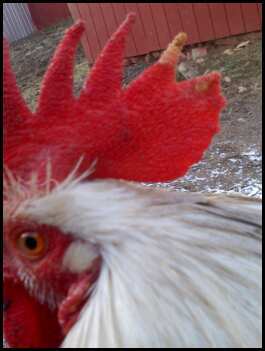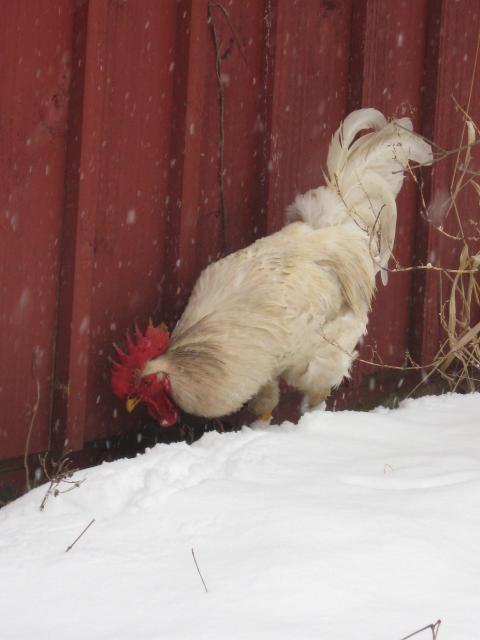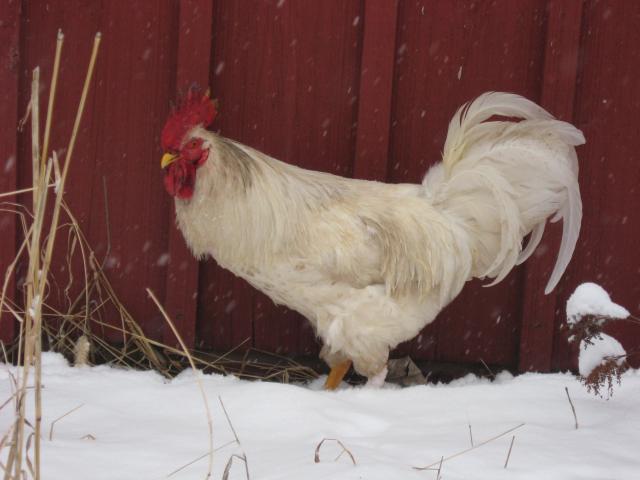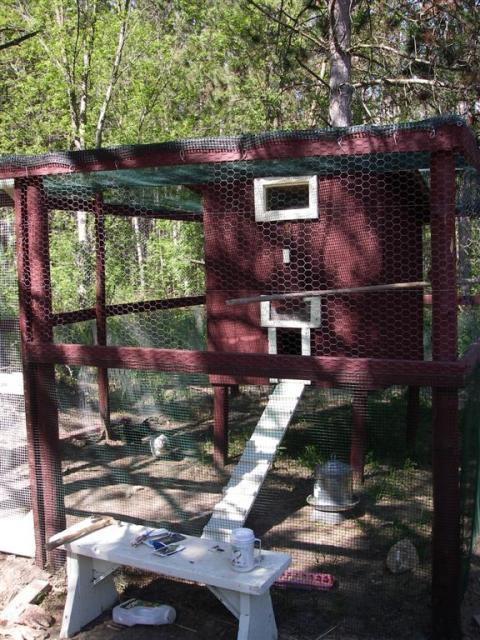- Aug 19, 2010
- 115
- 2
- 99
I have been reading for months about frostbite, and how it is usually caused by too much moisture/humidity in the coop and not by the cold alone. Are there cases when it does not necessarily mean excess moisture? I have a tiny coop (basically a roosting box), and I am fairly sure the ventilation is adequate (I have already posted on here several times about it, including one post w pics)... A few weeks ago, the roost was used by two roos and I only had mild frostbite cases on the coldest/windiest nights...but now that I am down to one bird, even though it is warmer, his frostbite seems to be getting progressively worse! I am thinking at this point, it likely is not caused by moisture, since it was not a problem with 2 birds in the coop, but has gotten worse with only one....Is it possible it is just too cold for one bird, even in a small space where heat should be conserved? Temps have basically been around 20 degrees, give or take....I know this should not normally be a problem!
I am at wits end...tried putting the hens in there to roost for extra body heat, but they just won't do it...they would rather sleep outside in the secure run than in there with him And, when they do sleep in there, they won't let him go in....ARRRRGH
And, when they do sleep in there, they won't let him go in....ARRRRGH
I am at wits end...tried putting the hens in there to roost for extra body heat, but they just won't do it...they would rather sleep outside in the secure run than in there with him
 And, when they do sleep in there, they won't let him go in....ARRRRGH
And, when they do sleep in there, they won't let him go in....ARRRRGH

 I did look at the links and associated pictures...doesn't look like what I've got, so I still think my guy has frostbite..even though it is still bright yellow with no black. Now just have to figure out why it keeps getting worse!
I did look at the links and associated pictures...doesn't look like what I've got, so I still think my guy has frostbite..even though it is still bright yellow with no black. Now just have to figure out why it keeps getting worse!


